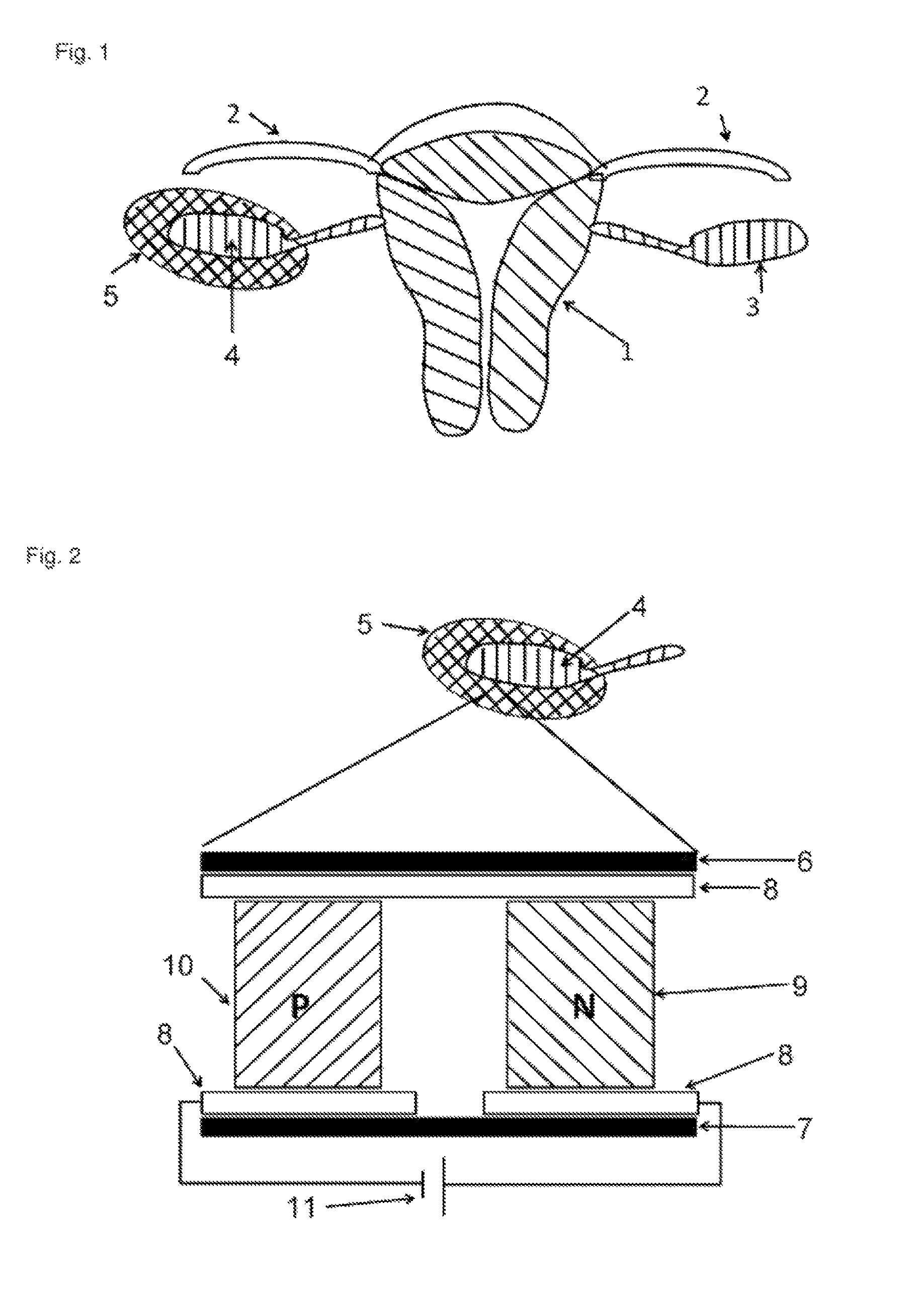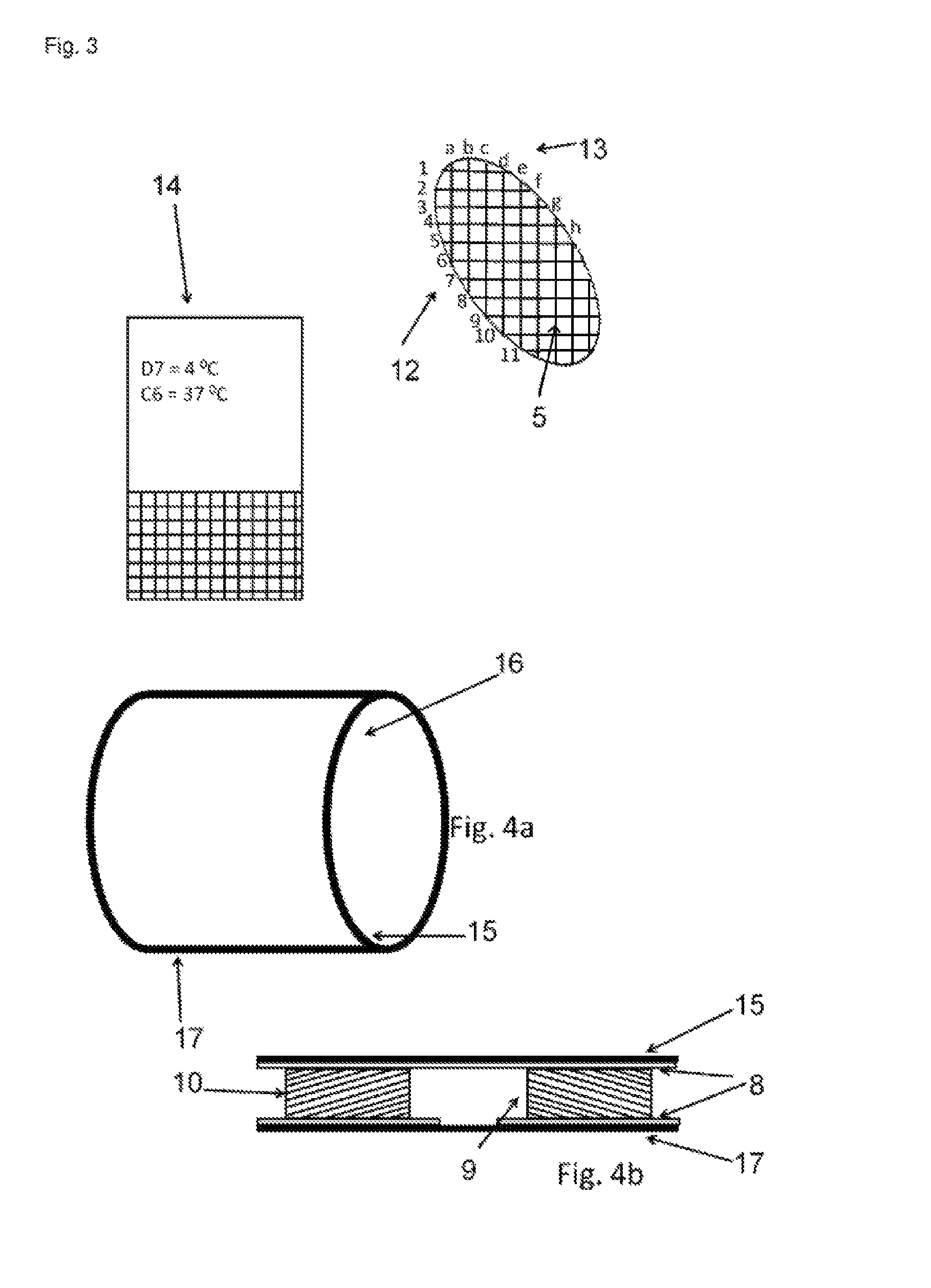Fertility preservation device
a technology of preservation device and ovaries, which is applied in the field of medical devices, can solve the problems of affecting affecting the effect of fertility, and affecting the effect of ovaries, so as to reduce fertility, preserve the function of ovaries, and modulate function
- Summary
- Abstract
- Description
- Claims
- Application Information
AI Technical Summary
Benefits of technology
Problems solved by technology
Method used
Image
Examples
Embodiment Construction
[0025]In accordance with the invention, the toxic effects of chemotherapy on ovarian function in premenopausal women treated due to cancer could be reduced by decreasing the temperature of the ovary during treatment. The ovary is a small oval organ with dimensions of about 1.5 cm×3 cm; the current invention is an implantable device, which modulate the temperature of the ovary. By reducing the temperature of the ovary, the metabolic rate of ovarian cells decrease, energy consumption of the ovarian cells decrease, and blood flow to the ovary change. This change due to lowering of the ovary temperature decreases the vulnerability of ovarian cells to chemotherapy, similar to the decreased hair loss from scalp cooling, and the lower toxicity to the nails when using freezing gloves during chemotherapy treatments.
[0026]In another aspect of the invention, sufficient decrease in the temperature of the ovaries by the current invention will result in decreased hormonal secretion from the ovari...
PUM
 Login to View More
Login to View More Abstract
Description
Claims
Application Information
 Login to View More
Login to View More - R&D
- Intellectual Property
- Life Sciences
- Materials
- Tech Scout
- Unparalleled Data Quality
- Higher Quality Content
- 60% Fewer Hallucinations
Browse by: Latest US Patents, China's latest patents, Technical Efficacy Thesaurus, Application Domain, Technology Topic, Popular Technical Reports.
© 2025 PatSnap. All rights reserved.Legal|Privacy policy|Modern Slavery Act Transparency Statement|Sitemap|About US| Contact US: help@patsnap.com



